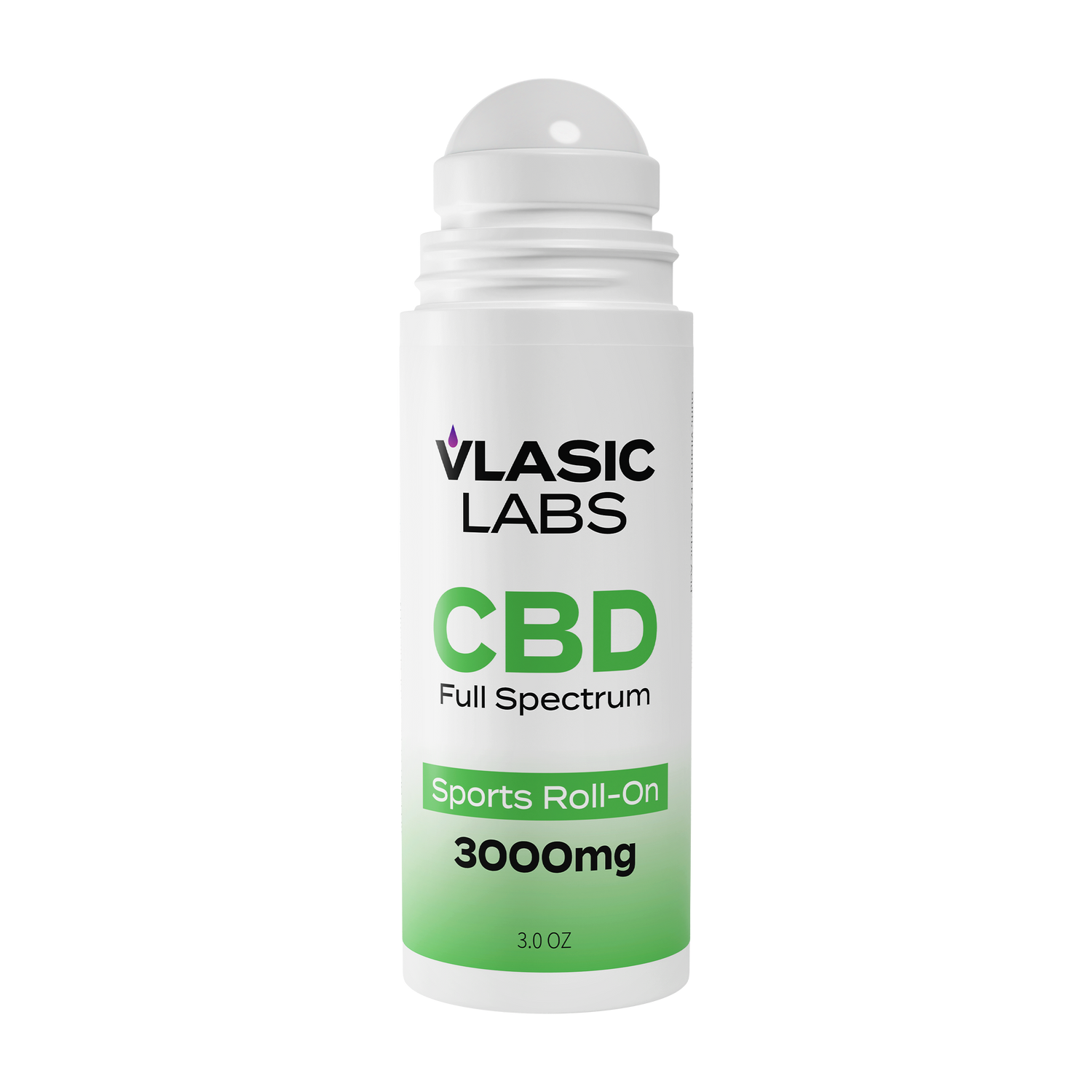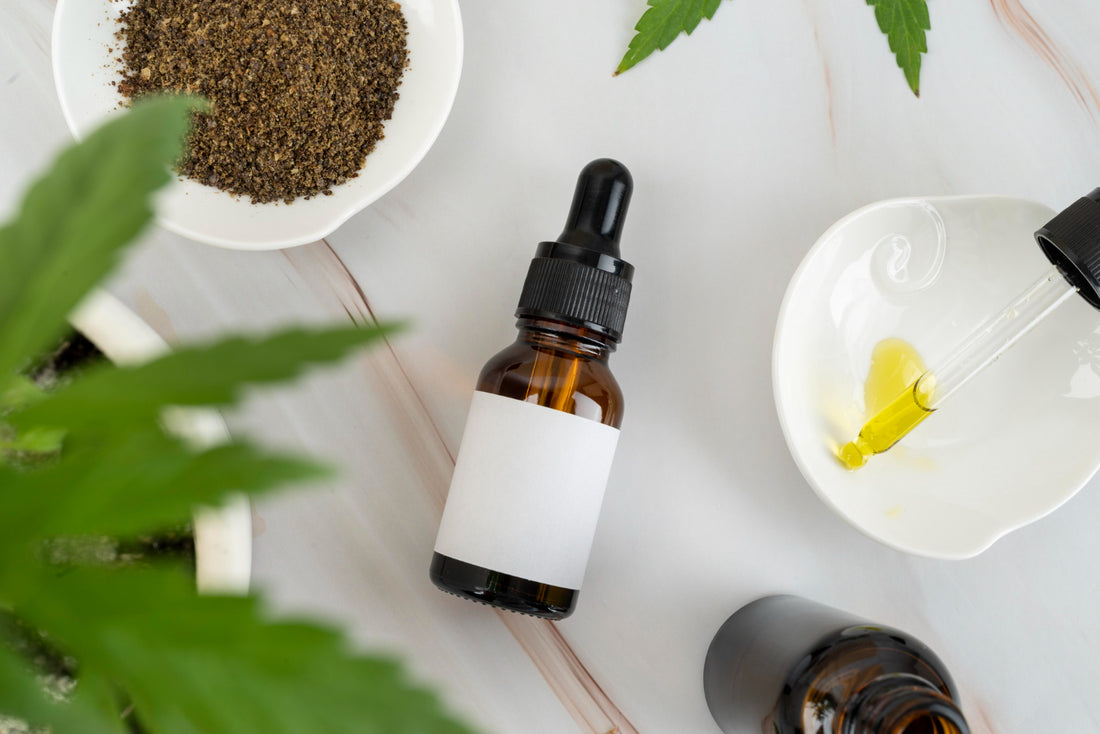You may already know all about cannabidiol, commonly known as CBD, but have you heard of CBN?
CBN, which stands for cannabinol, is just one of the more than 100 cannabinoids derived from hemp.
Although less familiar than its counterparts, CBN has recently grown in popularity thanks to its many benefits.
In this comprehensive guide, you’ll learn about CBN, its many uses, its effects, and how it differs from other cannabinoids like CBD.
What is CBN?
CBN can be found in hemp plants. It is formed when certain compounds are exposed to heat and oxygen. It is mostly found in aged hemp plants that have experienced prolonged exposure to air and heat.
One of the characteristics that sets CBN apart from other cannabinoids is that it has mild psychoactive properties, though it doesn’t produce the “highs” associated with other intoxicating compounds.
CBN consumers report primarily using it for relaxation and promoting a better night’s sleep.
CBN engages with cannabinoid receptors differently compared to other cannabinoids, interacting indirectly and predominantly binding to CB2 receptors located within the body’s immune system.
Although THC and CBD come to mind when most people think about popular hemp-derived products, CBN was identified and researched among scientists much earlier.
Unlike the more popular hemp derivatives, CBN can be clearly detected only in more mature hemp plants. That is because CBN levels rise as the hemp plant ages and as the THC in the plant degrades.
Based on this fact, THC can be converted to CBN as well, post-extraction, by exposing it to oxygen and heat.
Despite its link to THC, CBN doesn’t have its intoxicating effects.
As part of The Agriculture Improvement Act of 2018, commonly known as the 2018 Farm Bill, hemp-derived CBN's production, sale, and consumption was legalized along with CBD.
How is CBN Formed?
CBN is formed through oxidation, where a substance chemically combines with oxygen through the removal of hydrogen atoms to create a new product, similar to the rusting of metal.
When you compare THC and CBN at the molecular level, you’ll see that their structures are nearly identical in composition, apart from the four hydrogen atoms lost by THC through oxidation, resulting in the formation of CBN, a milder alternative to THC that stands out as one of the most potent cannabinoids for the promotion of sleep and relaxation.

Despite its shared origins, it's crucial to note that CBN contains no THC. The hydrogen atom loss during oxidation transforms CBN into a distinct molecular structure devoid of the intoxicating properties of THC.
As CBN emerges during the degradation of THC, it's only natural that mature hemp exhibits increasing levels of CBN and decreasing levels of THC.
CBN and the Endocannabinoid System
Our body’s complex endocannabinoid system (ECS) helps us to achieve and maintain overall health and well-being. Cannabinoids, like CBN, can only interact with the human body thanks to their ECS.
The primary function of our ECS is to maintain homeostasis, which is the stable internal condition needed for survival. It stabilizes both the physical and mental response to any stimuli, internal or external. The body’s ECS keeps mood, stress, and heart rates in check as things around us change.
While so much about the human ECS remains unexplored by science and research, we know that the endocannabinoid system is connected not only to our brains and nervous systems but also to our tissue, skin, bones, and other biological structures.
The ECS includes two known cannabinoid receptors that enable function, known as cannabinoid receptor one (CB1) and cannabinoid receptor two (CB2). Both have their own responsibilities, working within distinct areas of the, though they perform certain similar functions, like immune system influence.
The main responsibility of a cannabinoid receptor is to broadcast information to the cells regarding the status of the body’s overall health and well-being. Essentially, they work to maintain homeostasis. This is done using endocannabinoids or phytocannabinoids, which activate the cannabinoid receptors.
While the body naturally produces endocannabinoids as needed, phytocannabinoids are synthesized naturally from hemp-derived products. CBN and CBD are both examples of phytocannabinoids that can activate different parts of the endocannabinoid system when they bind with cannabinoid receptors.
Your body’s CB1 receptors cluster primarily in your spinal cord and brain through the central nervous system (CNS). They help to manage motor function, coordination, appetite, pain perception, and short-term memory.
Your CB2 receptors are predominantly found within your peripheral nervous system (PNS), influencing skeletal muscles, the cardiovascular system, gut health, and reproduction.
CBD binds to the CB2 receptors, THC binds to the CB1 receptors, and CBN binds to both!
How CBN is Different from CBD
Although both CBN and CBD are hemp-derived compounds, their similarities pretty much end there.
CBD is abundant within industrial hemp plants and other targeted high-CBD hemp strains, while the presence of CBN depends upon the age of the plant. Essentially, it is dependent on how long the plant’s THC content was exposed to oxygen and heat.
Although neither CBD nor CBN can produce intoxicating effects on their own, each can influence the psychoactive impact of THC. CBD can reduce the intoxicating effect of THC, while CBN can enhance it.
While CBD molecules will primarily bind to the body’s CB2 cannabinoid receptors, CBN attaches to both CB1 and CB2 receptors and operates through other distinct biological pathways apart from the ECS.
Known Benefits of CBN
There is insufficient data from research to give us a complete picture of all the benefits associated with CBN. However, evidence has shown that CBN will interact with our ECS, modifying the effect of other cannabinoids.

For now, the CBN seems most useful in its role as part of what is known as an “entourage effect.” The entourage effect refers to groups of phytocannabinoids working together synergistically. That’s why you are most likely to find CBN combined with other minor cannabinoids, like CBG, to produce wellness products derived from help and featuring high CBD concentrations.
On its own, customers commonly use CBN with the intent to fall asleep faster and achieve higher quality deep sleep.
CBN FAQs
How does CBN get extracted, and how is it consumed?
CBN production utilizes various methods, including solvent and CO2 extraction as well as conversion from other cannabinoids. Once produced, CBN can be consumed in several ways.
Popular methods include:
- Tinctures or oils
- Topicals
- Inhalables
What’s the difference between THC and CBN?
CBN possesses unique qualities that differentiate it from other phytocannabinoids.
Here are some of the primary differences between THC and CBN:
- CBN is formed from THC that has been dehydrogenated
- CBN isn’t entirely non-psychoactive but has a lesser potency than THC
- THC is converted into CBN through time, heat, or other degradation
What’s the difference between CBN and CBD?
There are several significant differences between CBN and CBD, as follows:
- CBD is non-intoxicating and produces no euphoric effects, while CBN has mild psychoactive properties.
- Some hemp plants naturally contain high CBD levels, but the maturity of the plant ultimately determines the plant’s CBN levels.
- CBN and CBD are cannabinoids that can alter THC’s psychoactive effects
- CBN binds to both the CB1 and CB2 receptors. On the other hand, CBD primarily attaches to CB2 receptors.
Is CBN legal?
Hemp, as well as its derivatives, like CBN, are legal in various countries for medical or recreational use. However, even where general use of hemp compounds is permitted, restrictions on the purchase, possession, and consumption of CBN products may apply. The purity and quality of CBN products can also vary, emphasizing the importance of sourcing products from reliable suppliers. To understand potential risks and benefits, consulting with your healthcare provider before using CBN is recommended.
Can CBN be used for pain relief?
While early research indicates potential pain-relieving properties of CBN, more substantial studies are needed to confirm its effectiveness in pain management. Some anecdotal evidence suggests CBN may be helpful for chronic pain conditions, but it's not a substitute for established analgesic medications.
Is CBN addictive?
CBN is not considered addictive and doesn't produce the same dependence as THC. However, some individuals may experience mild withdrawal symptoms like irritability or difficulty sleeping when stopping CBN use after prolonged periods. As with any cannabinoid, it's recommended to practice moderation and consult a healthcare professional if you have concerns about developing dependence.
Where can I find CBN products?
Hemp-derived products with high CBN counts are currently hard to find. That’s because, unlike CBD, CBN tinctures, capsules, and oils haven’t flooded the market due to CBN’s natural scarcity and the price to extract or convert it from other compounds.
Vlasic Labs CBN Tincture and Sleep Spray are some of the most potent products on the market, offering distinctive benefits without additional active ingredients such as melatonin.
Many hemp-derived products, such as CBD oils, are often labeled broad- or full-spectrum, containing a variety of flavonoids, terpenes, and minor cannabinoids like CBN.
However, that is starting to change, and more CBN-heavy products are appearing.
How do broad-spectrum hemp-derived products differ from full-spectrum hemp-derived products?
The primary difference between broad-spectrum hemp-derived products and full-spectrum hemp-derived products is that broad-spectrum hemp-derived products are entirely THC-free. On the other hand, full-spectrum hemp-derived products might contain detectable trace amounts of THC. Broad-spectrum CBD products can include substantial amounts of CBN, CBD, and CBG.


